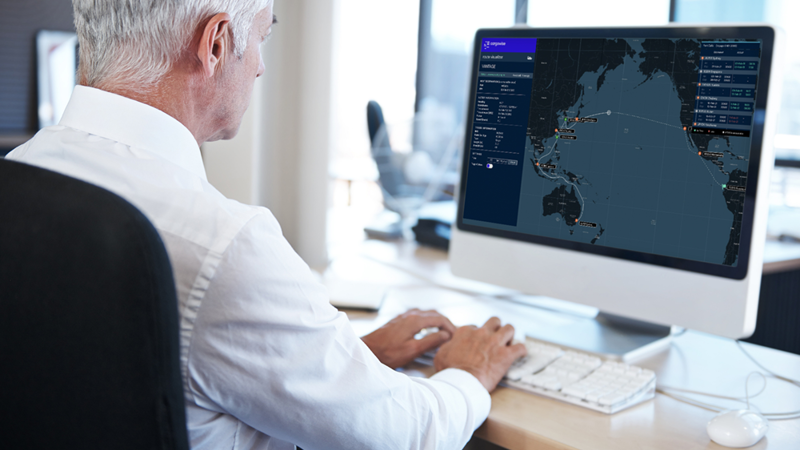Alors que nous approchons de la fin d’une autre année inhabituelle, il est indéniable que les délicates chaînes logistiques mondiales restent soumises à une pression extrême.
Dans mes échanges fréquents avec des clients, il apparaît clairement que nous faisons face à une demande mondiale sans précédent, accompagnée de perturbations sévères au niveau de la production et de la chaîne d’approvisionnement.
Par exemple, en dépit d’une inflation élevée, le Bureau de recensement des États-Unis signale que les ventes au détail ont augmenté de 1,7 % en octobre 2021, la plus forte hausse depuis mars, les consommateur·rices dépensant davantage pour les premiers achats de Noël. En fait, les ventes ont grimpé de 16,3 % d’une année sur l’autre en octobre et dépassent de 21,4 % leur niveau d’avant la pandémie.
Dans le même temps, les fermetures brutales des principaux centres de production et des ports ont contribué à la montée en flèche des coûts d’expédition et à des délais de livraison plus long. De plus, les embouteillages dans les principaux ports, tels que ceux de Los Angeles et de Long Beach, ont encore perturbé la circulation des marchandises, malgré les tentatives d’accélération du traitement des conteneurs.
Je travaille dans le secteur de la logistique depuis près de vingt ans, et je peux affirmer que cette incertitude permanente a entraîné la nécessité impérieuse pour le secteur de digitaliser des processus et méthodes de travail manuels, souvent chronophages et sujets aux erreurs, à tous les niveaux de l’entreprise.
Il existe manifestement une demande forte et croissante de technologies permettant d’obtenir une vision plus complète du cycle de vie d’une expédition, aussi proche que possible du temps réel.
Mais l’accès aux données n’est qu’une partie de l’équation. Pour naviguer avec succès dans ce nouveau contexte et faire face aux perturbations en position de force, les informations doivent être actualisées pour pouvoir être exploitées, et elles doivent idéalement être disponibles via un dossier logistique unique géré de manière centralisée.
Quels sont les avantages d’une plus grande visibilité ?
Dans la plupart des cas, une bonne visibilité conduit à des chaînes logistiques plus solides et plus agiles. Notamment parce que :
- Avec une meilleure visibilité, vous pouvez agir plus rapidement car vous avez une bien meilleure idée de ce qui se prépare.
- Si vous savez ce qui se prépare, vous pouvez réduire les problèmes et congestions potentiels avant qu’ils n’apparaissent.
- Si vous agissez rapidement et réduisez les menaces de manière proactive, vous disposez de plus de temps pour des projets à plus forte valeur ajoutée visant à améliorer le service client.
- Vous pouvez examiner rétrospectivement l’impact d’une perturbation particulière sur la chaîne logistique et mieux modéliser les impacts futurs.
- Vous passez du mode « lutte contre les éléments » à une position de force, où vous pouvez adapter et flexibiliser vos atouts et ressources à travers différents portefeuilles d’activités, en réponse aux défis que vous rencontrez.
Comment la technologie peut-elle améliorer votre visibilité de bout en bout ?
Les congestions de la chaîne logistique n’étant pas près de se résorber et les fermetures liées au COVID se poursuivant dans certains pays, une plateforme ou une base de données unique constitue la solution la plus simple.
L’idéal étant un seul système capable de conserver et d’échanger ces données tout en offrant un portail permettant à toutes les parties prenantes de contrôler et de mettre à jour leur chaîne logistique : connecteurs standard, mises à jour simples du statut et visibilité globale à partir d’un seul endroit.
CargoWise, notre logiciel d’exécution logistique sécurisé basé sur le cloud, rassemble toutes vos succursales, services, effectifs et opérations dans un système mondial profondément intégré.
Il permet d’éviter de recourir à des systèmes multiples et complexes, assurant ainsi le traitement rapide et précis des expéditions, du devis initial et la réservation jusqu’au dédouanement, en passant par le transport, l’expédition, l’entreposage et l’émission de la facture finale destinée à votre client.
Nos intégrations souples et complètes entre les modules, zones géographiques, clients, systèmes tiers et gouvernementaux peuvent accroître votre productivité et votre efficacité. Par exemple :
- L’intégration dans et entre les modules de CargoWise signifie que les données sont immédiatement disponibles dans d’autres modules, ce qui élimine les entrées en doublon et permet un accès en temps réel entre les fonctions.
- L’intégration entre les zones géographiques permet aux données d’être instantanément disponibles dans toutes les régions et traduites dans plus de 30 langues et devises.
- L’intégration avec d’autres clients permet aux prestataires de services logistiques d’interagir efficacement entre eux, améliorant ainsi leur productivité et leur visibilité opérationnelle grâce à la gestion centralisée offerte par CargoWise, avec des données circulant au sein d’un système intégré unique.
- L’intégration avec des systèmes tiers offre aux clients la possibilité de déployer CargoWise dans l’ensemble de leur entreprise tout en leur permettant d’y intégrer leurs autres systèmes et les produits d’autres fournisseurs.
- L’intégration avec les systèmes gouvernementaux tels que ceux des douanes, de la quarantaine, des impôts, de l’alimentation, des médicaments et d’autres organismes gouvernementaux permet d’améliorer le traitement dématérialisé, d’accélérer les délais d’exécution et de réduire les remaniements.
En partageant les données en temps réel dans toutes vos opérations et en automatisant autant que possible vos processus, CargoWise vous donne, à vous et à vos clients, l’accès et la visibilité nécessaires pour assurer le déplacement des marchandises avec plus de facilité tout au long de la chaîne logistique.
Accélérez votre mise en production grâce à l’aide d’expert·es. Notre réseau mondial de Partenaires CargoWise aide les clients de toutes tailles à mettre en œuvre et à configurer CargoWise pour répondre aux besoins de votre entreprise. Découvrez comment
